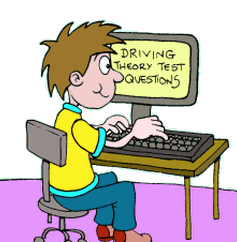Tips on preventing car crime
It is an obvious statement that nobody wants their car to be broken into or have items stolen from their car. Yet despite this some drivers take little care in discouraging theft.
There are various types of crime and various types of theft. There are those planned crimes that you are unlikely to be able to stop, where your car is specifically targetted.
However a lot of car crime is called opportunity crime, whereby someone spots the chance or opportunity to steal something and therefore decides on the spur of the moment to commit a crime.
A classic example of this is someone popping out of their car and leaving their mobile phone and wallet in clear view on the seat or by the windscreen of the car. When people walk past and see these there is a clear opportunity crime there whereby someone is tempted to on impulse break in and steal those items.
Other obvious things to avoid are to forget to lock your car. Some drivers get into bad habits and when they just pop out they don't lock their car. Remember that an accomplished thief only needs a matter of seconds to perform a crime, so no matter how long you leave your car for always lock it and take your keys with you. Perform a mental check everytime you leave your car that you've done both those things, and then it will become second nature. Much better to do that each time you leave the car than not to do it and have something stolen from your vehicle, or of course even worse the vehicle itself if you make the classic mistake of leaving the cars inside the car and it not being locked!
Related Articles...
Towing a load such as a caravan
When you tow a vehicle such as a caravan, it is clearly the case that driving conditions will be very different, and much more so again than simply having a heavier load or having a roof rack...
What to do if you breakdown at a level crossing
Driving is potentially dangerous, but it is important not to worry about things that could happen when driving but at the same time you should know what to do in the unlikely event that something...
Tips on driving with a heavy load
When you have passed your test and been driving for a while, you might find yourself driving with a heavy load.
For instance if you are going on holiday then you might have lots of stuff that...
Nervous Driver Tips
Many people who learn to drive have a combination of nerves and excitement. Even if someone says they have no nerves and are perfectly confident when it comes to driving, the first time you get...
Some common engine faults
It is beyond the scope of the articles here to go into detail about how the engine works and what the various parts of it are. For the theory test you won't need to know a great detail about the...
The Advanced Driving Test
There are advantages to continuing to study driving by means of a course like the advanced driving test, because it will help to give you the chance to develop your skills even further than you had...
What to do in an accident situation
If you do have an accident, then you must stop. Whilst you may read about people driving away from the scene of an accident, you should always stop and face up to any responsibilities involving...
How does the hazard perception test work
The hazard perception test is the second part of the driving theory test, and it was introduced towards the end of 2002.
There are two parts to the theory test, and the second part of the test...
The New Drivers Act
The New Drivers Act is legislation that applies to those who have just passed their test and are categorised as new drivers, which in this legal definition refers to the first two years of passing...
Being aware of potential hazards
Having the maximum time possible to react to hazards is important and can be the difference between an awkward situation or even an accident and continuing safe driving.
This requires you not...
Back to home page of driving theory test questions

